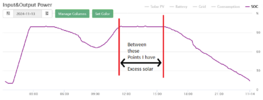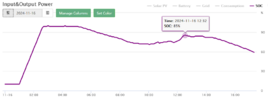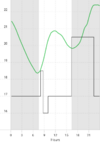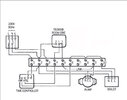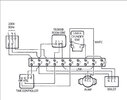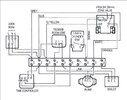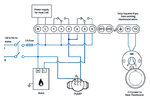- Joined
- 27 Jan 2008
- Messages
- 25,025
- Reaction score
- 2,898
- Location
- Llanfair Caereinion, Nr Welshpool
- Country

This month, very few days do we have excess solar, but it does happen, and it seems a shame to export for no payment when we could use the power our selves. What would seem the best option is iboost+ connected to an oil filled radiator, but that is a rather expensive method, a simple timer seems a better option, so we don't forget and leave it on.
By next year, I hope we will get payment for export, so only looking at now until April, suppose could fit a plug and socket to immersion heater supply and run an extension down the stairs, but for just 4 months that seems a bit OTT, plus the trip hazard.
But when we have clear skies, so loads of solar, using an oil filled radiator in the living room will likely save us money, but get the weather forecast wrong and it could also cost us. We keep an oil filled radiator handy in case central heating fails, don't fancy lighting a fire in the grate, but I am sure I am not the only one, who exports without payment.
So, has anyone worked out how to use excess solar to heat their house?
By next year, I hope we will get payment for export, so only looking at now until April, suppose could fit a plug and socket to immersion heater supply and run an extension down the stairs, but for just 4 months that seems a bit OTT, plus the trip hazard.
But when we have clear skies, so loads of solar, using an oil filled radiator in the living room will likely save us money, but get the weather forecast wrong and it could also cost us. We keep an oil filled radiator handy in case central heating fails, don't fancy lighting a fire in the grate, but I am sure I am not the only one, who exports without payment.
So, has anyone worked out how to use excess solar to heat their house?

